India’s Consumer Boom Unveiled
April 19, 2024 | Stock Talks

The first two decades of this century were China’s, then this decade and beyond will be India’s. The consumption story in India is just unfolding. - Sanjiv Mehta, Former CEO and MD, HUL
India, boasting a population of 1.4 billion, has recently surpassed China to become the world's most populous country. Beyond economic indicators, India's demographic profile, characterised by a sizable youth population and an expanding middle class, underscores the nation's growing consumer potential.
Headlines announcing India's remarkable GDP growth of 7.6% have captured widespread attention, showcasing the country's growing manufacturing prowess. Increased investment in India's manufacturing sector is anticipated to have a ripple down effect, spurring consumption.
The surge in retail lending activity provides tangible evidence of increasing consumer demand. India's credit boom has fuelled a resurgence in sectors such as luxury real estate, automotive industries, and high-end consumer goods, reflecting a robust appetite for discretionary spending.
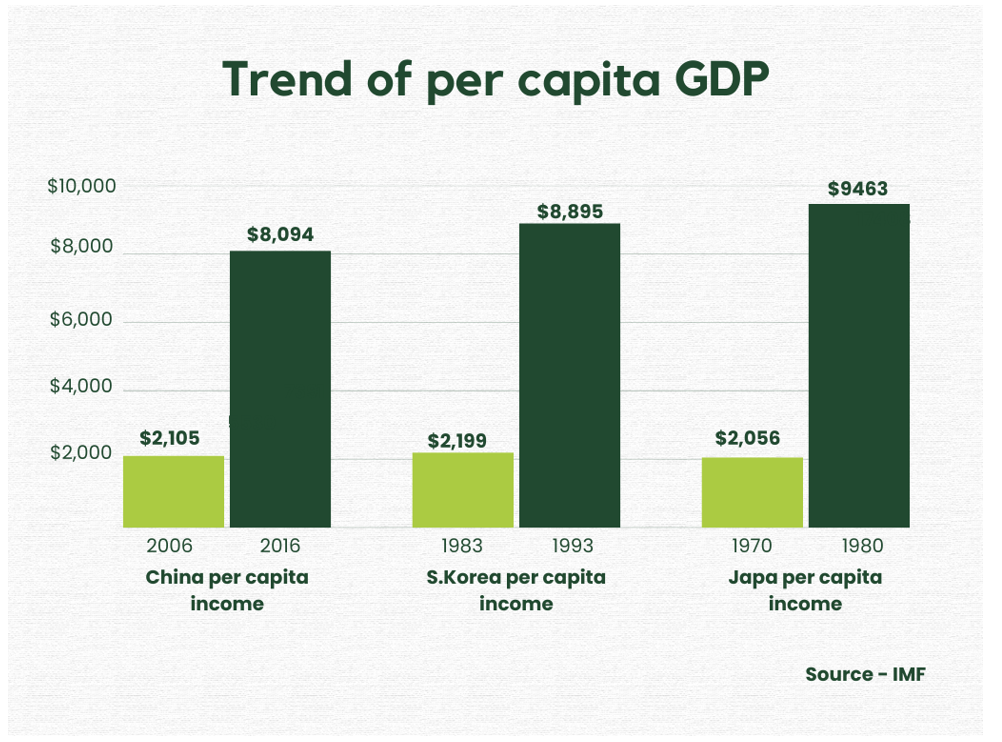
Economists forecast that when per capita GDP exceeds $2,000, a notable transformation occurs where countries observe a consistent trend of increased consumption, particularly discretionary spending. A similar trend was observed in the United States in the 1950s/60s, Japan in the 1970s, South Korea in the 1980s, and China in the 2000s.
Guess what? India has crossed the crucial inflexion point where per capita GDP has exceeded $2500. This is the stage where consumption skyrockets and moves from spending on needs to indulging in wants. Moreover, the trend towards premiumization spurs an increase in demand for luxury and high-end products. According to Bain & Co., the luxury market in India could burgeon to $200 billion by 2030, marking a threefold increase from its current size.
Forecasts from S&P Global Market Intelligence indicate that India's GDP could soar to an impressive $7.3 trillion by 2030. Such growth prospects are underpinned by escalating manufacturing activity, which is expected to translate into heightened consumer spending and stimulate economic growth.
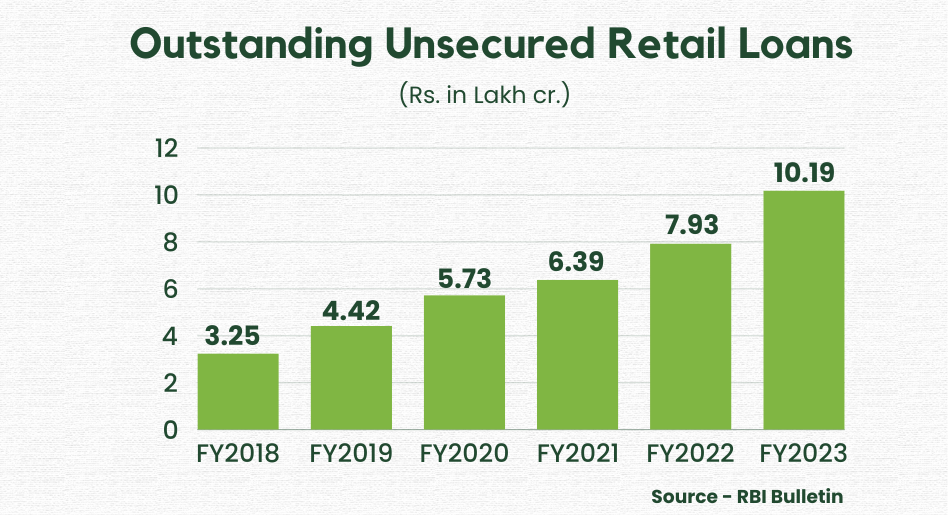
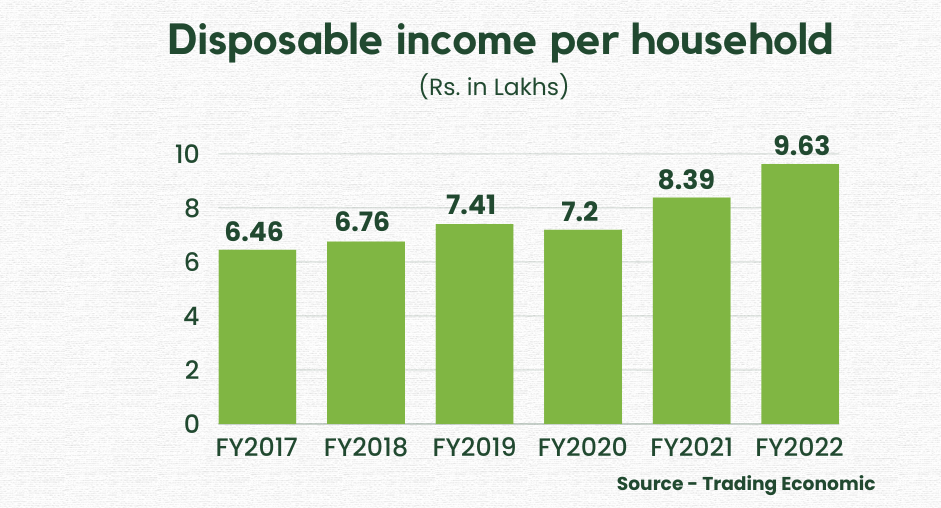
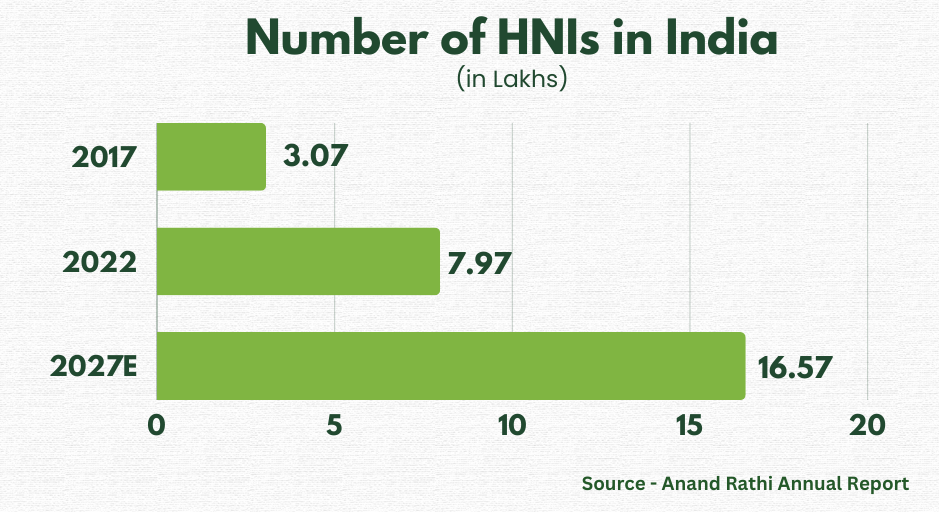
This demographic dividend, combined with rising aspirations for an elevated lifestyle, drives demand across various sectors. Some of the interesting sectors that can benefit from this trend are:
Wealth Management Industry:
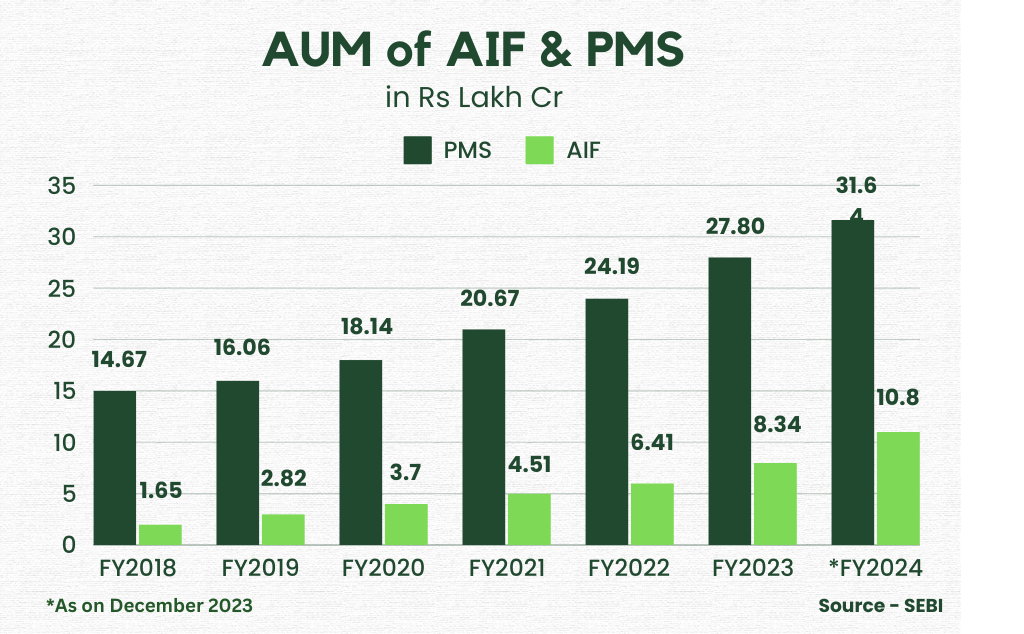
Savings remain at the heart of every Indian. The rising per capita income will robustly drive India’s consumption story, but not at the cost of investments. Overall, the rising per capita income will simultaneously promote a culture of responsible investment. This dual momentum is harnessed by the wealth management sector to help individuals maximize the potential of their savings and navigate the complexities of wealth accumulation in an evolving economic landscape. With the rising number of demat accounts and high-net-worth-individuals (HNIs) in India, the wealth management industry is poised for inevitable growth. As individuals accumulate wealth, there is a growing need for professional management of their assets.
Luxury Segment:
One of the segments that can benefit from this ongoing premiumization trend is the luxury segment. Indians are embracing premium products and luxury fashion, creating significant growth opportunities for the luxury segment in India.
- Luxury watches
Luxury watches have always been a statement of elegance, status, and timeless style. The majority of luxury watches are Swiss watches. There has been a remarkable growth in the consumption of Swiss watches in India, reflecting an increasing preference for high-end watches among Indian consumers. The recently signed India-Europe free trade agreement will further boost the demand for Swiss watches as customs duties on imports will be removed over a period of 7 years.

- Luxury Cars
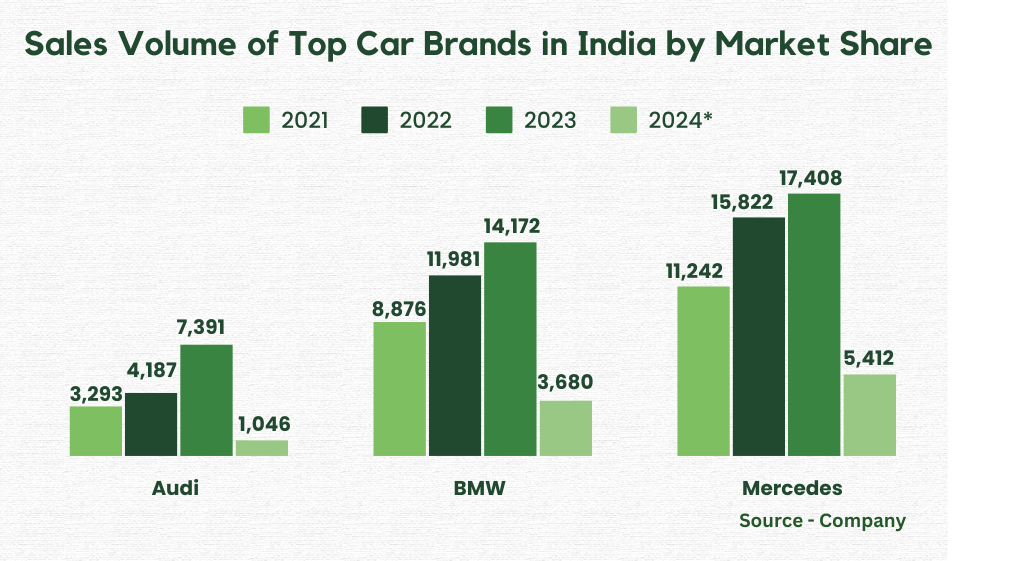
Another segment benefiting from India's economic growth is the luxury car segment, which has achieved its best-ever sales in the recently concluded financial year 2023-24. Carmakers attribute the increase in sales to a lifestyle shift post-Covid-19, with younger professionals opting for high-end cars. The booming market reflects an increasing appetite among Indian consumers for luxury and exclusivity. Also, considering the under penetration of luxury cars in India, where luxury car sales represent only 1% of total car sales, compared to higher percentages in countries like Japan (5%), Europe (18%), and China (17%), it's evident that India's luxury market holds immense potential for growth.
Hospitality sector
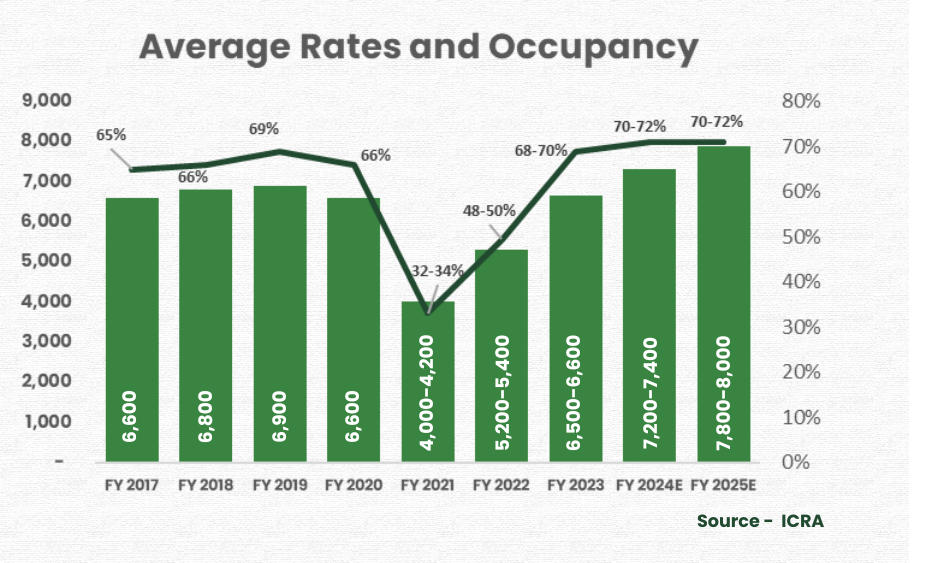
India’s hotel industry surged back to life, driven by a post-covid uptick in travel. Double-digit revenue growth was propelled by domestic leisure trips, meetings, incentives, conferences, and exhibition (MICE) events, the G20 Summit, and the return of business travellers. The added excitement of the ICC Cricket World Cup saw hotels fill up, and unorganized accommodations were abuzz.
Currently, India's share in the total global MICE tourism (meetings, incentives, conferences, and exhibitions) is less than 1%, valued at USD 876.42 billion in 2022. This global market is projected to grow at a CAGR of 7.5% from 2023 to 2030. In India, it is expected to reach 2% within the next five years.
India is the fastest-growing aviation market in the world, with a projected growth in air trips of 7-8% between 2023 and 2030. To match the growing demand, Indian airlines have placed record orders for over 1,500 aircraft (discussed in the aviation blog).
All these indicators point to India emerging as a focal point for significant investment opportunities. The infusion of nearly $12.2 billion by foreign fund managers in the first half of 2023 alone underscores the growing interest in India's economy. With private consumption contributing a substantial 60% to India's GDP, it is clear that the nation's consumer market is on track to become the world's third-largest by 2027.
Moreover, India's trajectory suggests that it will evolve into a $5 trillion consumption economy by 2031, with the middle class expected to drive 53% of incremental consumption. This underscores the enduring appeal of India's consumption story, making it one of the most compelling long-term investment opportunities.


 Follow
Follow